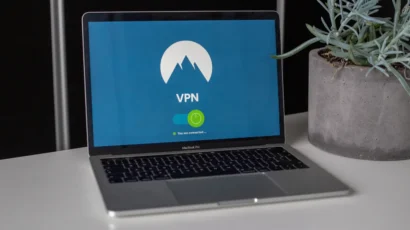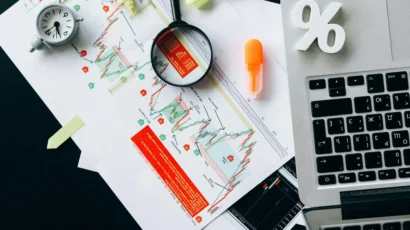Disclosure: Privacy Australia is community-supported. We may earn a commission when you buy a VPN through one of our links. Learn more.
Best Futures Trading Platforms in Australia

If you’ve heard of futures trading and are not sure what it is, we’re here to clear that up. The options for futures trading is expanding, creating a lot of opportunity across markets.
Below, we’ll take a look at what futures trading is and discuss the pros and cons, helping you decide if it’s a good direction for you.
Table of Contents:
- How to Find an Online Futures Trading Broker
- Summary of Our Top Picks for Trading Futures Online
- Best Brokers for Future Trading in Australia
- Understanding Leverage
- The Need for Speculation
- How to Trade Futures
- Futures Contract Details
- Tips All Futures Traders Should Know
- What is Futures Trading
- Futures Vs. Options Trading
- How Do Futures Work
- Pros and Cons of Futures Trading
- Futures Trading: Worth the Risk if You’re Ready
How to Find an Online Futures Trading Broker
Because futures trading is complex, you want to take time when choosing an online trading platform. Don’t just go with the first one you find, and take some time to consider your experiences as an investor to help you choose the best one for you. Look for some of the same qualities that you find with current brokers, checking for:
- Competitive fees
- Around the clock customer care
- Access to advanced market analysis tools
- Safety and security
- Overall value
Summary of Our Top Picks for Trading Futures Online
Best Brokers for Future Trading in Australia
There is a lot of competition out there, which is why we set out to narrow it down to just a few. Below, you’ll find an in-depth look at 4 of the best futures traders on the web. Think about your trading preferences and find the one that gets closest, signing up and launching your futures trading experience.
1. Charles Schwab
Key Specifications
- Regulators: CFTC
- Minimum Deposit: $0, $25,000 for non-US accounts
- Deposit Fees: $0
- Withdrawal Fees: $0
- Inactivity Fee: No

Pros
- Free stock trading
- Lots of tools perfect for in-depth research
- Customer care that’s always there
- Access to a number of markets
Cons
- Mutual funds come with high fees
- Limited global markets
Since 1971, Charles Schwab has been in the business of helping investors of all levels get into the market. Throughout the years, they’ve taken time to integrate a ton of advanced tools into their trading platform, giving investors of all levels many of the tools they need to make better investments and keep track of all their current investments from their mobile devices. While some of the fees are a tad high, they are worth it for all of the advanced features offered.
Easy Sign Up
Once you choose Charles Schwab, the first thing you’ll have to do is create an account. To do that, all you have to do is visit their home page and set up your account, providing the necessary details and verifying your identity. It’s 100% online and quick to set up, getting you into the game quickly.
Notifications
Unless you’re pouring over changes in the market from day to night, you’re not going to notice some of the things that happen. That’s why having an automated system on your side is key to keeping up with changes and understanding what’s happening with your investment at all times. Configure your account with automatic alerts and get updates right to your phone, so you can decide what to do fast.
Research Tools
If there is one area where Charles Schwab excels, it’s its abundance of research tools. They have data interactive charts that provide a look at the market from customizable angles. We will say that some of the research tools are so complex that they take some getting used to, as do all of the options that you have. They offer trading ideas and even provide a rating for all trades to help investors weigh their options easier than just relying on their own research.
2. Interactive Brokers
Key Specifications
- Regulators: ASIC
- Minimum Deposit: $0
- Deposit Fees: No
- Withdrawal Fees: $0
- Inactivity Fee: Yes. Kicks in after 12 months of no activity

Pros
- Best for more active investors, with perks for a higher number of trades
- Low fees
- Advanced features like tracking of top professional portfolios
- Markets include ASX and Forex
Cons
- Inactivity fee
- Australian brokers have limited features
With the opportunity to track successful active investors and use innovative tools, International Brokers offers Australians a more interactive way to trade. Though brokerage fees come in at $5 or 0.08%, investors won’t have to worry about paying many other fees, with no inactivity, deposit, or withdrawal fees to get in the way. It’s great for active and first-time investors, with abundant market content and more.
Access to Portfolios
Doing as top investors do is one way to get started off on the right foot when it comes to trading futures. With International Brokers, Aussie traders can take a look at what some of the most successful investors are doing and how they are trading. They can use that as a way to find out what markets are hot and which to stay away from. Plus, they can take steps to diversify their portfolio, taking hints from the top investors that have them.
Solid Platform
Investors can log in with their mobile phones and also use their PC to access their accounts. From there, they have a solid platform at their fingertips, one that provides real-time analysis and access to the latest news. It’s easy to navigate around and figure out, not taking you long until you have it down and can start trading futures like a pro.
Investment Selection
Apart from all of the tools and features, investors can also find investment options for days. Apart from futures, there is access to mutual funds, fixed income, and more, not just in ASX but around the globe. It provides the perfect opportunity to start diversifying your portfolio, adding things here and there that help decrease your risk and increase your overall investment.
3. TradeStation
Key Specifications
- Regulators: FCA
- Minimum Deposit: $1000
- Deposit Fees: No
- Withdrawal Fees: $0
- Inactivity Fee: No

Pros
- Relatively low fees
- Lots of products to choose from
- Customer care 24/7
Cons
- Limited deposit options
- Complicated account opening
Creating an account will take you a bit longer than other platforms but, once you’re in, you’ll have a number of great things to enjoy. From an interactive app with all the best features and access to several of the top markets around the globe, investors are sure to find exactly what they are looking for when they sign up for TradeStation. They have low fees and amazing customer support, both of which make it one of the best platforms you’ll find out there.
Fee Structure
The minimum deposit is $1000, of which investors can spread out into the market any way that they see fit. There are no fees for withdrawing earnings and no fees for deposits either. The one place where investors will find fees is with trading, though they come out to only $0.007 per share.
Mobile App
The mobile app is well-organized and features all the tools and features that investors could possibly need to get things going. The app comes with a two-step login to keep information safe and a customizable dashboard where investors can check in on the latest news, create watchlists, and even make trades. Buying into futures is simple and takes little to no time when using the mobile app or desktop version.
Available Markets
TradeStation shares a lot of its trading features with International Brokers, as the two companies are partnered. That means that investors can find stocks, bonds, ETFs, options, and more, not only within ASX but also within other high-performing markets across the globe.
4. NinjaTrader
Key Specifications
- Regulators: ASIC
- Minimum Deposit: $400
- Deposit Fees: No
- Withdrawal Fees: $40
- Inactivity Fee: Yes. $25 per month for inactivity *excluded logging in

Pros
- A platform that’s full of research opportunities
- Educational tools
- Low trading fees
- Lots of market options
Cons
- High withdrawal fee
- Fees for inactivity
With NinjaTrader, you better be ready to jump in and keep things moving. If you don’t, you’ll pay a lot more than you might have bargained for. However, if you’re an active trader, you can benefit from using this platform to find futures to trade and more. The platform comes loaded with educational tools, all of which are there to get a better grip on the market.
Trading Platform
When you visit the trading platform for the first time, it might seem a bit overwhelming. That’s because NinjaTrader has gone out of its way to pack in educational tools and other advanced features to help you up to your trading game. For futures, you can take a look at charting and make use of advanced market features so that you can better decide how to plan your investment. Investors have options to set up automated trading and even add protective stop losses and more to reduce their risk and enhance their trading ability.
Futures Trading
While the platform offers fewer overall options, NinjaTrader does it big when it comes to futures. There is a long list of exchanges up for grabs for futures trading, including CME, NYMEX, ICE, CBOT, and more. Investors in Australia can pick one or a few, adding them to their list of investments to have a more diversified portfolio that has a mix of top markets all in one place.
Solid Customer Care
When it comes to giving investors the attention that they need, NinjaTrader knows a thing or two, with options that include live chat, phone support, email support, and more. While it’s not available day and night, their extended hours ensure that, if there is a question, it will be answered promptly. They offer relevant answers and offer all investors a forum where they can interact with one another and learn from one another.
Understanding Leverage
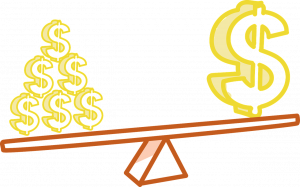
Leverage is an amount that traders can use to invest without having to put 100% of the contract value upon entering. Instead, investors only have to invest a fraction of the cost, which comes with pros and cons. Both companies and buyers will have to enter into a contract when it comes to investing in futures, which will go by the price of the commodity at the moment of signing.
The difference between the settled amount in the contract and the final price of the commodity on the market is known as the cash settlement and is what investors will either gain or have to pay to make up the difference. Leverage can be thought of as a type of loan, one that allows investors to buy shares of higher value at a lower price in hopes that they will go up in time.
The Need for Speculation
The way that traders make a profit from trading futures is by speculation. When purchasing a commodity, they do so with the hope that the commodity will rise in value, earning them profit for the difference. Before the contract expires, buyers have the opportunity to sell the trade for the amount that is currently listed in the market, which could either be more or less than what they initially invested.
Because of the fact that prices of commodities can fall, investors could take a short or sell speculative position if they think that the value is going to fall instead of rising. This will shut the contract down if it indeed does fall, allowing both parties to settle on the contract. In this way, investors can bank off of the fact that they knew the value would fall, gaining a profit if it does and losing it if the contract did not.
One of the main reasons why investors choose this type of investment is for the large gains that can come from it, as margin investing can seriously amplify gains. Like with every investment, just as gains can be amplified, they can also be stripped away, creating huge losses for investors. If there is a case either the amount speculated is far from the investor’s brokerage account, they may have to make a marginal call to have additional funds deposited into their accounts before they can move forward.
How to Trade Futures
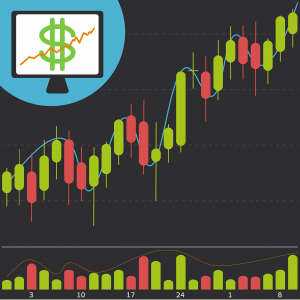
Futures trading is a type of trading that’s unlike any other. While there are opportunities to earn money, there are also ways to lose it, which is why it takes a deeper understanding of the market and a decent initial investment. If you think you’re up for it and are ready to get into the futures trading game, here is how you can trade futures.
Step 1. Understand the Risks
Before getting into it, it’s good to understand that there are risks involved. While all investing comes with some form of risk, futures are thought to come with more, as it’s dealing with a larger investment. While the initial investment can be small, the contract amount can wind up being much larger, which could be bad news for you and your investments.
To reduce the common risks that come along with futures trading, be sure to research the market heavily and consider the company you’re investing with. Don’t just check their current stance, look back and search for projections, from both the company and other analysts. Once you are certain, plan your purchase, your trade, your budget, and also think of an exit strategy just in case things don’t work out as planned.
Step 2. Select your Market
One thing is for certain, you won’t be short on markets to choose from. There are lots of them out there, some of which you might know nothing about. Even if there seems to be a lot of hype around a certain market, don’t jump on the bandwagon too quick.
When you select your market or markets, look toward companies and industries that you are already familiar with. This will give you an edge on the information, as you might be able to make more connections than other investors. With futures, it’s about what you know and how confident you are that the market will move in one direction or another.
Step 3. Check Requirements
When you choose a trading platform that offers futures trading, one of the first things you should do is take a look at margin requirements. This will tell you how much you’ll have to spend to make an investment and how much it will cost you if you want to withdraw your funds if your investment grows.
A lot of the best platforms out there offer tools that will help you see how your overall investment will play out in the market, showing you how much you have to invest initially and how much you stand to gain. Plus, you can check out contract details and set them the way that you want them, ensuring that you are placing the investment you want.
Step 4. Make your Contract
Once you have a good idea about which futures you’ll be trading, it’s time to execute your order. To do that, start by visiting your trading platform and selecting the futures trade you would like to make. Then, choose to execute, making sure that the contract is up to your standards before moving forward.
At this time, don’t skip the creation of an exit strategy, as that can be a saving grace when the market starts to get unpredictable. These include things like stop orders and bracket orders, both of them working together to reduce your risk and keep your investments safe.
Step 5. Monitor your Trade
Using one of the many tools on your platform, make sure to keep track of what your investment is doing. Set up alerts so that you can get notifications for all changes and make sure that you have your exit strategy ready to go just in case things don’t work out your way. If things go well, and you come out on the positive side, you’ll have more than you started with, able to trade more future or continue to diversify your portfolio.
Futures Contract Details
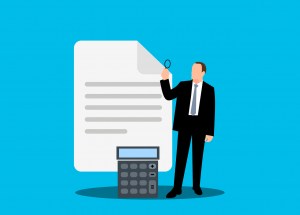
Futures contracts are pretty standard and outline the specs of your trade. A few of the different paraments listed in a futures contract include:
- The unit of measurement
- Settlement of the trade (physical delivery or cash)
- Quantity of goods
- The currency where the contract is executed
Most of the time, futures traders don’t want to physically deliver any item, which is why most contracts are settled in cash.
Tips All Futures Traders Should Know
Before you take off and start trading futures, take a look at the following tips. We’ve gathered these up from some of the most successful traders on the market, providing you with something that you can learn from and look forward to.
Make a Plan
While you might be used to making plans if you’re a seasoned investor, it’s a bit different with futures. Futures trading requires more planning, as it depends on several factors that you have to look into. While an investment might look promising, it’s always best to think of the worst that can happen, preparing you for the worst just in case it happens when you least expect it.
Protection Saves the Day
We’ve mentioned certain market orders before, some like stop loss and protective stops. These orders are there to ensure that you don’t lose all of your investment, especially when the market starts to do unpredictable things.
To make your futures trading more secure, consider adding stop losses or one-triggers-other (OTO) orders, where you can have a protective stop. This will free your time up and make sure that you don’t have to spend every waking moment watching the market and keeping an eye on your investments.
One thing to keep in mind is that stops are not guarantees, so you will have to check up on things here and there. A stop might not protect everything but, it will protect you from experiencing huge losses if things start moving in the opposite direction.
Keep it Simple
If there is one mistake that a lot of investors make, it’s that they start to get overconfident when they learn the ropes. If you’re a seasoned investor that has been successful with other types of trading, don’t automatically think it will be the same for futures trading.
Futures trading takes a lot of work and requires you to do research and focus, all of which take time. If you have lots of other investments that you’re keeping track of, you might want to reduce your load before you start futures and focus on one at a time. We know that might sound like the opposite of what you’re doing now, but, it helps to keep it simple when you’re first starting out.
Pace Yourself
It can be tempting to go all-in, especially if you know what you’re doing. Still, start off slow and, if you decide to add more to your plate, do it little by little. Spread out investments so that you don’t have too much on your plate at one time.
Once you execute your first few futures trades, you’re sure to get the hang of it, finding your own strategy while you’re at it. It can take some time but, once you develop it, futures trading will make much more sense.
Think Long and Short Term
As an investor, you might have your money tied up in profitable stocks to grow your money long term. It’s also possible that you’ve dabbled with trading, going with fluctuations and trading often to grow your initial investment. Whatever the case, when it comes to futures, combining the two is your best bet.
Futures are great for both long-term and short-term investing, and both come with their own set of perks. There are opportunities in both that you don’t want to miss out on because you have your heart set on one or the other. Make sure to keep an open mind and think about your investments overall before trading futures.
What is Futures Trading?

When you trade futures, you’re speculating on what assets will do. It’s the exact opposite of traditional options trading, requiring that both parties involved buy and sell the asset in question at the date set in the contract.
The way that buyers benefit from futures trades is by locking in a price, one of which could be of more value later. If the asset increases in value over time, the buyer will gain the overage, counting that as profit from the sale.
On the contrary, if the asset decreases, then it’s the buyer that benefits, getting their hands on shares for a lower than market price.
Because of the necessity to speculate, futures trading does come with risks, though they do offer some benefit for traders that know what to look for. Spotting key trends and having good insight on how companies will perform is key to get into future trading successfully, requiring you to track the market and be in the know about all changes set to come its way.
Futures Vs. Options Trading
A lot of investors are not sure how to define futures, only having experience with options. While they may be experienced with other types of trades, futures are a whole different ball game, one that requires different techniques and practices.
When investors purchase an option, they are not obligated to do anything. They can hold onto the share, sell it, or trade it. All parties involved in the purchasing or trading of assets do not have to act if they choose not to, which makes them very different from futures.
With futures, both buyer and seller have obligations. Because futures involve speculation of what will happen with the market, sellers will have to check their daily gains and losses, readjusting their balances at the end of each trading day. Other investments do not require that, though investors may want to check on them more often to see how they are going.
How Do Futures Work?
When investors sign a futures contract, they are locking in their shares at a price that would guarantee that they could avoid any major price swings. Because it deals with the value of stocks in the future, it requires some close attention to the market and some serious speculation. To see how futures work in action, let’s consider jet fuel as an example.
Let’s say an airline company wants to purchase jet fuel at the current price and lock it in, buying and setting a future date of delivery at the selected price. Once the fuel distributor has been contacted about the deal, both sides go through some negotiations until an amount is settled upon.
If the airline agrees to buy 100,000 gallons of fuel in 60 days at a price of $2 per gallon, and the fuel distributor agrees, the contract is drawn up and each party signs and agrees. Though the contract is in the works, both investors and sellers will keep an eye on the value, seeing how their interest is best suited with the contract.
If shares skyrocket, then companies could do better by selling the futures contract. If they fall, then the buyer may need to secure funds or check out options to get out, making sure that they don’t lose too much along the way. It’s a liquid market with buyers, sellers, speculators, and more involved, all working toward the common goal of turning a profit off of market values as they rise and fall.
Pros and Cons of Futures Trading
As with all investments, there are some advantages and drawbacks to them. Noting these before you get started is a great way to calculate your risk and decide whether futures trading is right for you.
The Pros

We’ll start off with the good stuff, highlighting all of the benefits that you can expect when you start to trade futures.
Lots of Opportunities
Buyers and sellers are bounding around the market daily, looking for deals, buying, and selling. Because there is a lot of activity happening in markets, it’s easy for you to hop in and execute orders in an instant. Futures markets operate extended hours as well, making it more available to Aussie investors.
High Leverage
When you invest in traditional stocks, you’ll have to put a much larger initial investment into it. With futures, you’ll only need to invest a percentage (around 10%) which makes them much more affordable. If the stock moves in the direction you expected (up of course!), you’ll wind up collecting profits and benefiting from your initial investment.
Low Commission
Commission is one of those fees that no one wants to pay, as they can get in the way of return on investments. While stocks typically come with higher commissions, you can expect lower commissions from future trading. You may find some online trading platforms with $0 commissions, which could keep you from losing any of your investment in trading.
Lower your Risk
Adding some futures to your investments helps to lower your risk. There is always some form of risk involved in investments but, the more diversified you are, the less you’ll feel it when the market starts to shift and change.
Good for Gains
Short-term gains are a great way to bump up your initial investment. To do this with futures trading, you’ll have to be sure to do your homework and choose investments that are guaranteed to push you in the positive direction. While you can’t always predict the future, you can make informed investments.
The Cons

Just as there are advantages, there are also disadvantages that you’ll need to watch for to get the most out of your investments.
Time
Because your investment banks on the future of the asset you chose, time could be your worst enemy. Over time, your chosen asset could decrease in value, driving down your return. Try and aim for companies that have big announcements and have a solid reputation to deliver, increasing your chances of coming out on the positive end.
Possibility for Loss (Both Big and Small)
If the unexpected happens and the asset you invested in plummets, you’ll have to fund your account. If shares drop way lower than your initial investment, you may have to spend much more than you had in mind, taking a hit in the negative direction. Be aware that it can happen and take steps to prevent it.
Not Recommended for Newbies
Investors that are new to the market might want to refrain from futures trading until they get the hang of more simple tactics. With futures trading, investors have to analyze the market and understand how it works. It also takes keen attention to detail, something that new investors might not have developed yet.
The risk for new investors is probably not worth losing big on, making it better to trade other less risky assets than futures.
Futures Trading: Worth the Risk if You’re Ready
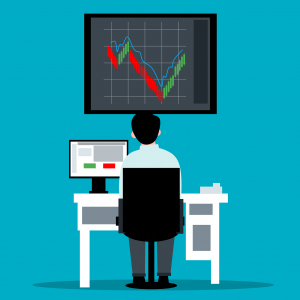
Because of the risks involved, futures trading isn’t for everyone. It takes a good understanding of the market and a decent initial investment. Additionally, it takes knowing how to research the market and the commodities traded, making sure that values don’t drop too much so that investors can minimize losses.
Futures trading comes with risk, though it’s worth it if you’re ready. If you think you have what it takes, and you’re ready to start another chapter with your trading abilities, check out our top trading platforms that specialize in futures, seeing what you can do. If you have a good eye for the market, futures might be perfect for you, though you should always consider your risks before you make any trade.
You Might Also Like:



